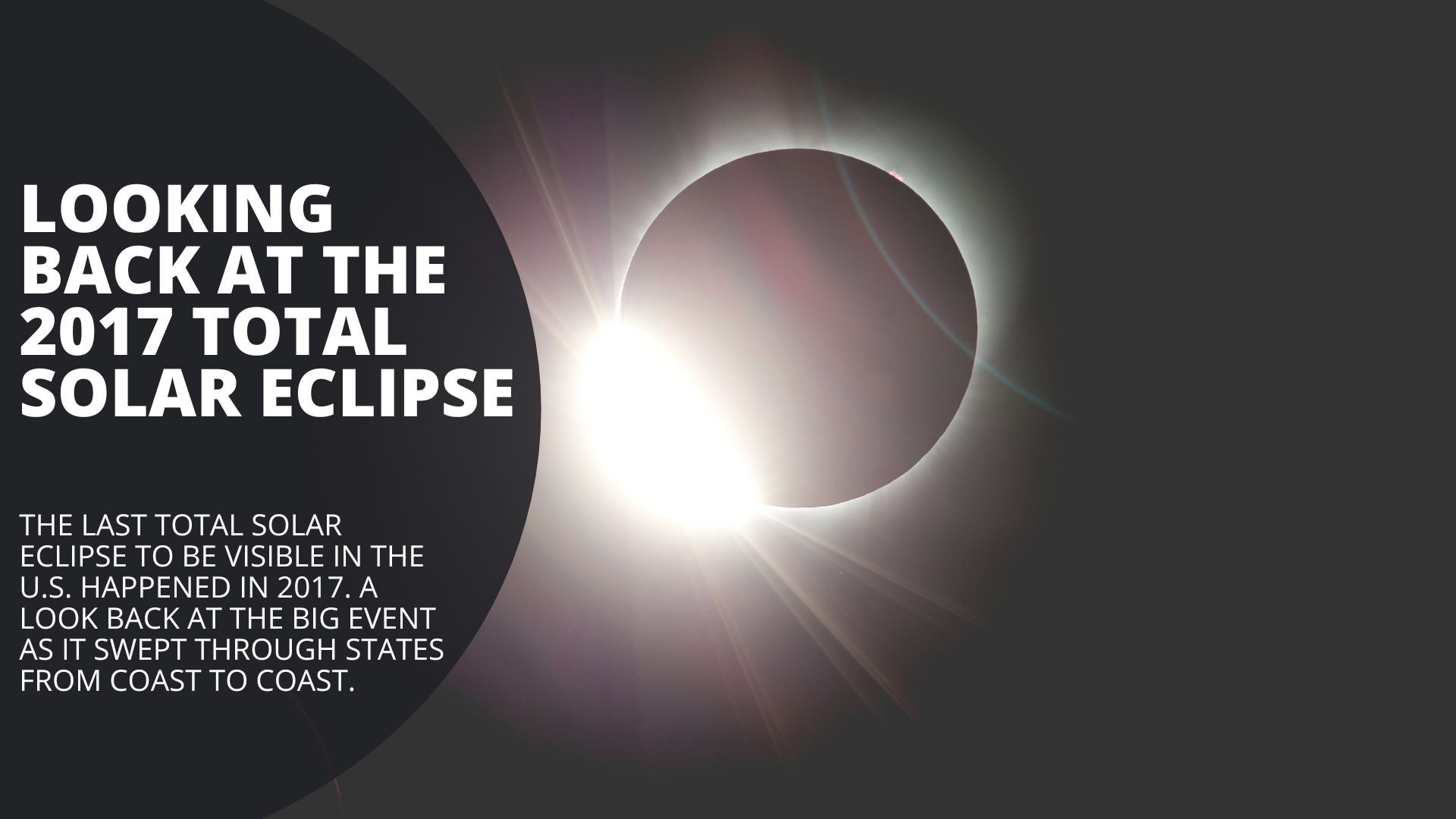WASHINGTON — Seven years ago, a total solar eclipse crisscrossed the United States and captured the attention of millions of Americans.
In less than one month, another total solar eclipse will emerge from coast to coast. This time it will be bigger and longer than the 2017 eclipse that an estimated 215 million American adults witnessed.
The total solar eclipse on Monday, April 8, is expected to put on a better show than its 2017 counterpart as it has a wider path and a longer totality.
Solar eclipse 2024 vs. 2017 path of totality
The path of totality in 2024 will be twice as wide as the one in 2017 due to the moon's distance from earth during the eclipse, NASA says.
Seven years ago, the path started in Oregon, stretched across the U.S. and exited through South Carolina. The path ranged from 62 to 71 miles wide, according to NASA.
In April, the path of totality will begin from Texas and travel through the Midwest before exiting through Maine. As for its size, it ranges between 108 and 122 miles wide.
The upcoming solar eclipse will also touch much more densely populated areas than the one in 2017. NASA says that roughly 31.5 million people live inside the path of totality for April's eclipse — a huge jump compared to the 12 million in 2017.
How long will the solar eclipse last?
April's solar eclipse will block the sun's light for much longer than the eclipse in 2017. That's because totality is lasting nearly twice as long in 2024.
In 2017, the longest totality time lasted about two minutes and 42 seconds in Carbondale, Illinois, according to NASA.
The upcoming eclipse's longest period of totality in the U.S. is expected to be four minutes and 26 seconds in Texas. NASA says durations longer than four minutes are expected for those in the center of the path of totality as far north as Economy, Indiana.
From there, the longest duration diminishes with the longest window being three minutes and 21 seconds as the eclipse exits the U.S.
Those not inside the path of totality are still in for some fun however as the rest of the U.S. will experience a partial eclipse. Even some parts of Alaska and Hawaii will be touched by a partial eclipse, NASA says.
Solar activity
NASA explains that roughly every 11 years the sun's magnetic field "flips," creating cycles of increased solar activity and decreased solar activity. During the 2017 eclipse, the sun was near its "solar minimum" cycle, meaning there was not much action.
As the solar eclipse nears, the sun will be in or near the "solar maximum" cycle. With that, there's a chance that many Americans will witness a coronal mass ejection - a large expulsion of solar material — during the eclipse, according to NASA.

